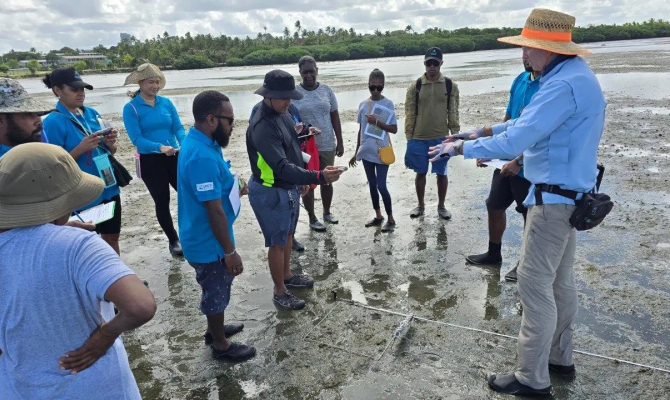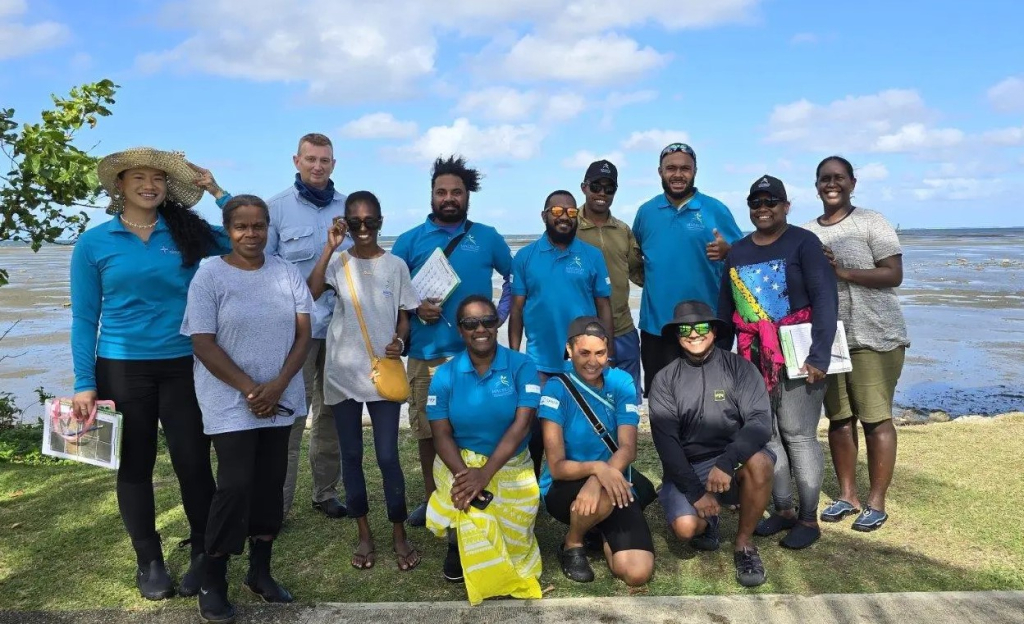
22 July 2025, Suva, Fiji - Thirteen representatives from Fiji, Papua New Guinea, Samoa, Solomon Islands, and Vanuatu are returning home with new skills and deeper insights into seagrass mapping and monitoring after a week-long regional training in Suva, Fiji.
Held at the Southern Cross Hotel, the training from 10-16 July, was a step forward in strengthening the Pacific’s capacity to protect one of its most valuable but often overlooked ecosystems: seagrass.
Chief Conservation Officer at Solomon Islands’ Environment and Conservation Division, Ms Agnetha Vave Karamui, said the training was both a refresher and a chance to sharpen practical skills.
“I gained a lot from the workshop. The facilitators provided a refresher on how to identify the species present in Fiji using Fiji’s case study. We also had an update and revision on the number of species and how to identify species that are growing in Vanuatu, the Solomon Islands, and Papua New Guinea,” Ms Karamui shared.
“One of the main components was on mapping and understanding how to map a seagrass meadow or a habitat, and also to recognise some of the mapping skills, protocols, and the process one has to know before mapping seagrass. This would be helpful and useful for capacity development in the Solomon Islands.”
Invertebrates Biologist with Vanuatu’s Department of Fisheries, Ms Falma Aiviji, said the training was a valuable addition to her work in habitat monitoring. She described the workshop as a "plus," as it enhanced her understanding of step-by-step protocols for seagrass monitoring.
“Seagrass monitoring is very important because it is one of the marine habitats that nurtures marine animals. I am very grateful to attend this workshop, as it will help me better monitor seagrass habitats, and this boosts my confidence in the monitoring of seagrass meadows,” Ms Aiviji shared.

Organised by the Secretariat of the Pacific Regional Environment Programme (SPREP) under the Management and Conservation of Blue Carbon Ecosystems (MACBLUE) project and supported by Seagrass-Watch: Global Seagrass Observing Network, the workshop combined theory with fieldwork, enabling participants to apply Tier 1 Seagrass Watch methodology for intertidal monitoring and mapping of seagrass.
“Seagrass ecosystems are essential for coastal protection, biodiversity, fisheries productivity, food security, and climate resilience,” said Ms Turang Teuea, MACBLUE Project Coordinator.
“Throughout the week, participants gained the skills in the identification of seagrass species as well as to collect standardiseddata on seagrass distribution, condition and change skills that are not only scientific but critical for informed policy development across the region.”
As Pacific nations move toward embracing blue carbon initiatives, the workshop signified the importance of equipping local experts with tools for the sustainable management of coastal ecosystems.
The MACBLUE project is jointly implemented by SPREP, the Pacific Community (SPC), and GIZ, working closely with partner governments from Fiji, Papua New Guinea, Vanuatu, and the Solomon Islands. The project is funded by the German Federal Ministry for Environment, Nature Conservation, Nuclear Safety and Consumer Protection (BMUV) through its International Climate Initiative (IKI).